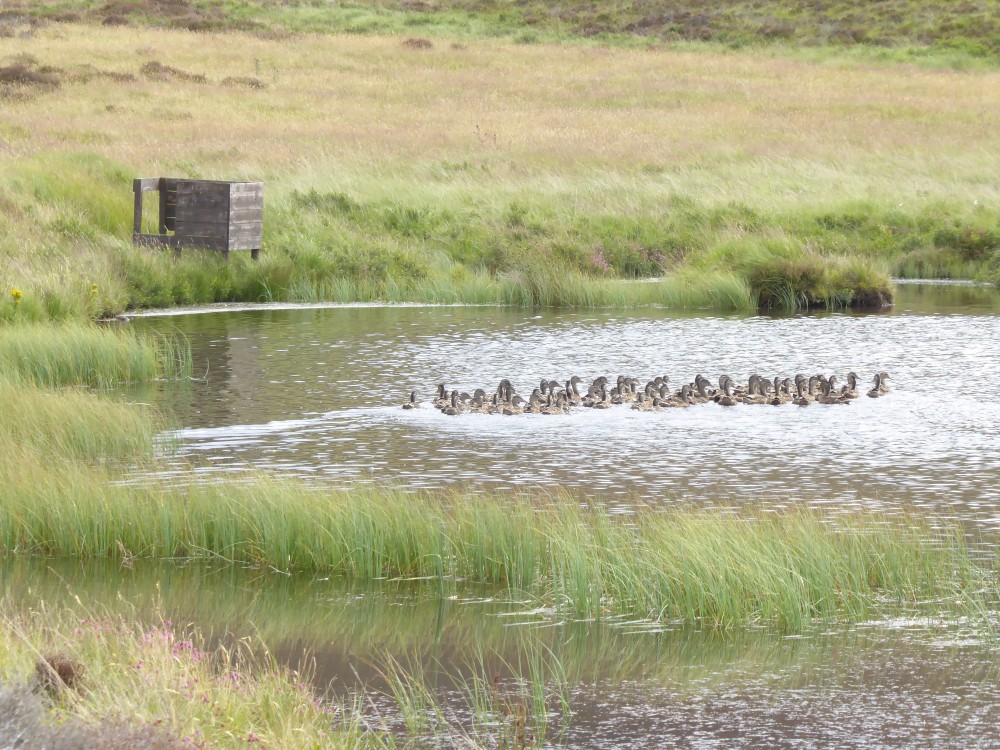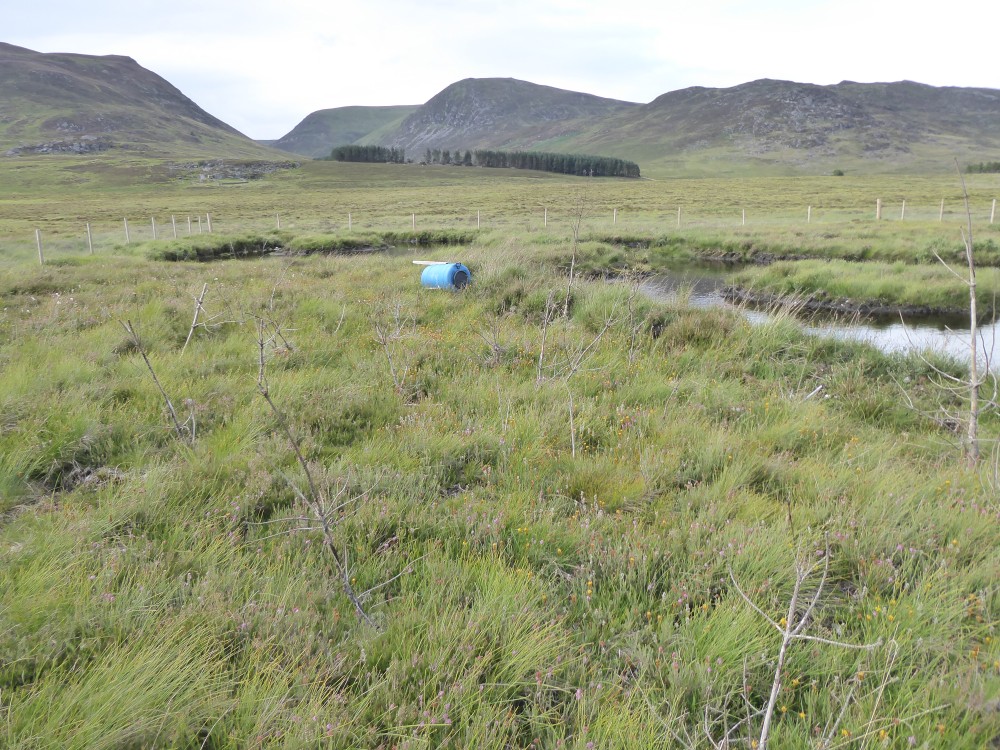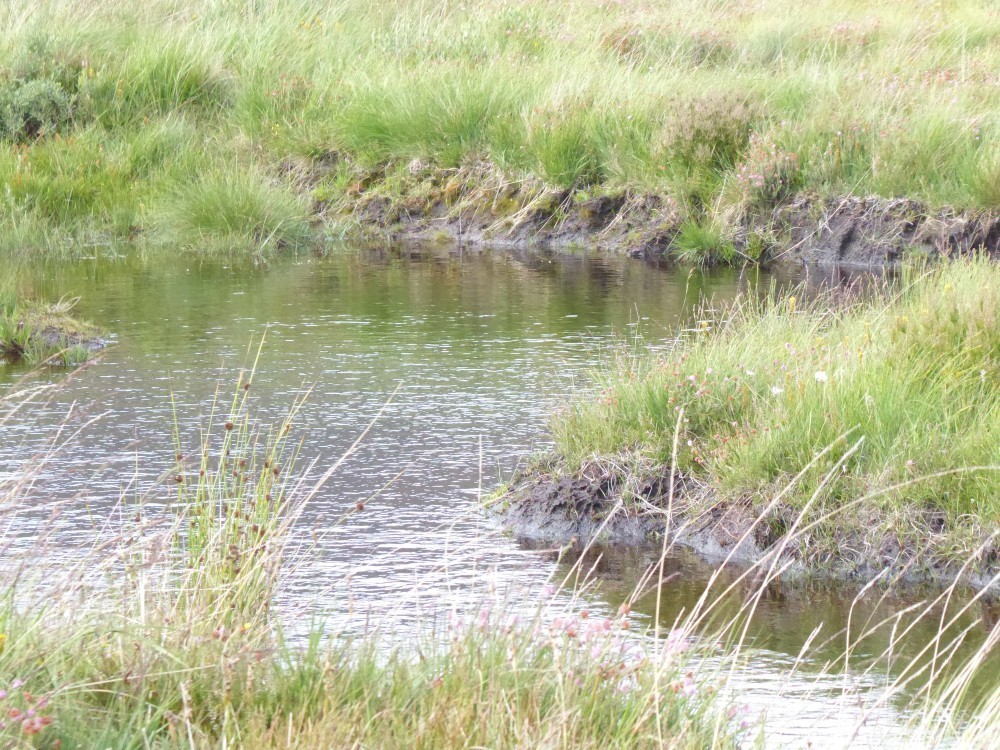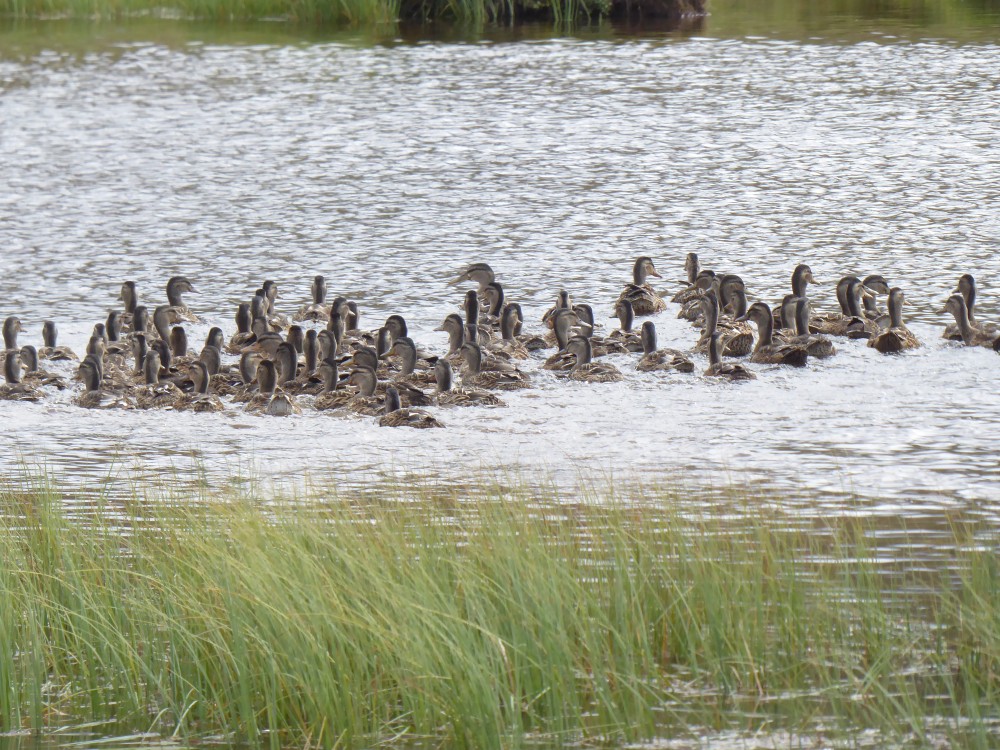
Yesterday Raptor Persecution UK published an excellent post calling for greater scrutiny of duck shooting on sporting estates (see here). By coincidence I had had my eyes opened to what is going on the week before when passing through the Ralia Estate to check on how Abrdn’s tree planting proposals at Far Ralia (see here).
Anyone who has spent any time on the lower parts of the sporting estates on Speyside will have noticed the proliferation of duck pools over the years, often with hides for shooting. A recent example is in Glen Banchor:

This “pond” is n the edge of a large area of peat bog which was “restored” a couple of years ago with funding apparently from NatureScot (see here) and not much more than a stone throw from the new native woodland planting funded by NatureScot and the Woodland Trust (see here).

Why public authorities and conservation organisations are paying sporting estates to restore woodland and peatland while allowing them to do this is unclear. The British Association of Shooting and Conservation (BASC) advises landowners to consult planning authorities before digging such pools in their guidance on flight ponds (see here) but I cannot find a single planning application for a flight pond ever been recorded on the Ralia, Kinrara (where there is a row of such ponds parallel to the A9) or Glen Banchor estates. Has there ever been an application in the Cairngorms National Park?
Naively, I had thought that these ponds were intended to create habitat to attract wild duck to roost, when they are known as flight ponds”, or perhaps to take up permanent residence. I cannot recall, however, ever seeing a duck on these pools despite often being out in the gloaming when ducks return to safe places to roost. But then I am usually away in the summer.

What I learned last week is that young duck reared in captivity are released onto the pools in summer, usually in July, and are then fattened up on grain:

With the abundant food, the young ducks quickly become “hefted” to the pool, an evolutionary weakness if you like that it ruthlessly exploited by gamekeepers.
Once the duck shooting season starts on 1st September the “guns” are stationed around the body of water before the duck are flushed by dogs. The ducks then circle round and round the pool – they are so hefted they don’t try to fly away – in a frenzy giving the “guns” multiple opportunties to shoot them. The carnage ceases when the gamekeeper blows a whistle and the shooters may then move on to another pool – the ducks are too hefted to be scared off by the noise. This is called “sport” . To be fair, some of those who shoot wildfowl decry it (see here).
In theory the creation or extension of existing pools of water, if done in the right places, could create new habitats. Where duck are released and then fed, however, this supports artificially high numbers (akin to feeding deer through the winter) and these then gobble up many of the plants and animals which might otherwise colonise the area. These sitting ducks therefore appear bad for biodiversity, like pheasant. Ducks, as Raptor Persecution Scotland pointed out, are also one of the main carriers of Avian flu.
The Cairngorms National Park Authority in their current partnership plan committed to assess the impact of gamebird releases on biodoversity by 2027 and then devise a plan of action (see here). The CNPA may lack resources but this is spineless. One thing they could do immediately is inform landowners they expect any work to create or enlarge existing pools of water should require planning permission and take enforcement action where this has not happened. A good place to start would be the new pond in Glen Banchor.
If you want to look at planning applications (and building warrants) across the whole of Scotland in one place the Improvement Service have just published a national dataset of planning application polygons (and points) as an open dataset on their Spatial Hub website. There is no attribution, but there is a link back to the planning authorities planning portal webpages https://data.spatialhub.scot/dataset/planning_applications_ccf-is
How pathetic is that? These people have no scruples whatsoever. Totally depraved. Might as well shoot fish in a barrel. Where are all the party politicos? Where is Greta? They’re all over levelling Ukraine and getting 100s of thousands killed. https://twitter.com/ProudSocialist/status/1514335653168877576?s=20
As usual, your insight reveals a total lack of mis-management by Local, regional & National authorities inc. this inept and politically deluded National Govt. in Holyrood.
Whoever thought that the interests of land management, rural development & most things truly green could be left to the windbags who proclaim to have the peoples’ interest at heart,, need to think hard and fast because it would certainly appear that the facade of ‘caring estates’ is but a veneer: under which many estates are twisting, torquing past their max and outrightly disregarding many controls & guidances in the our pursuit of profit…which, to my mind, may well be simply siphoned out of Scotland without much tax being applied.
Perhaps there’s an important project of investigative journalism to be done by researching the accounts of these estates and following the money? ‘Cause following the dosh will reveal the true colours of intent.